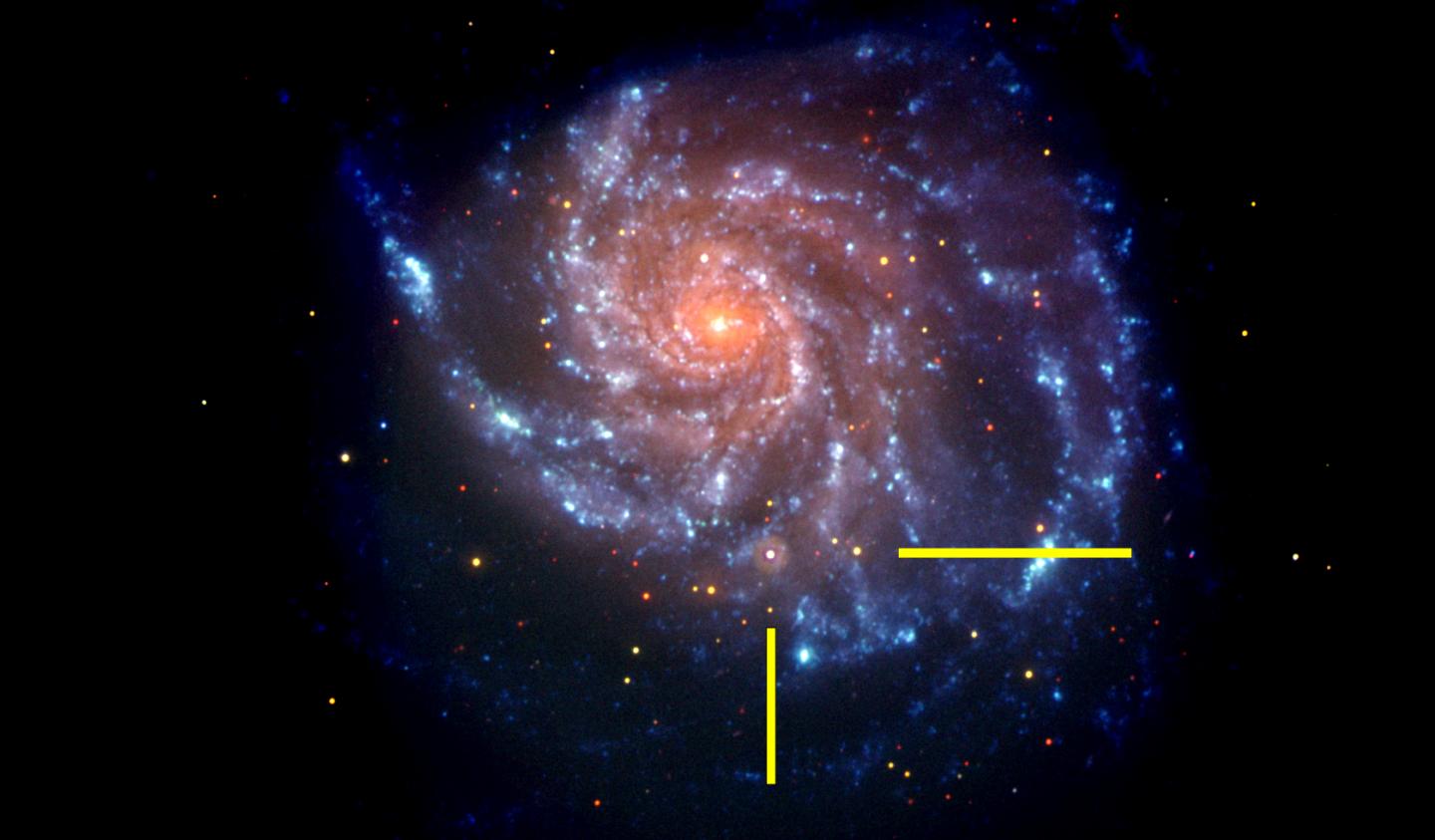The currently accepted view of the universe expanding at a faster and faster rate, pulled apart by an unknown force labeled under the umbrella term 'dark energy', is based on observations that resulted in the 2011 Nobel Prize for Physics. But observations based on uniform type Ia supernovae - cosmic "beacons" - may actually fall into different populations.
That's like comparing 100-watt light bulbs only to find out they vary in brightness.
"We found that the differences are not random, but lead to separating Ia supernovae into two groups, where the group that is in the minority near us are in the majority at large distances -- and thus when the universe was younger," says astronomer Peter A. Milne of the University of Arizona. "There are different populations out there, and they have not been recognized. The big assumption has been that as you go from near to far, type Ia supernovae are the same. That doesn't appear to be the case."

M101 in a NASA Swift image is shown, with bars indicating the location of supernova SN 2011fe. The Swift image is a false-color image with UV emission blue and optical emission red. Credit: NASA/Swift
The 2011 Nobel laureates discovered independently that many supernovae appeared fainter than predicted because they had moved farther away from Earth than they should have done if the universe expanded at the same rate. This indicated that the rate at which stars and galaxies move away from each other is increasing - something was forcing the universe apart faster and faster.
"The idea behind this reasoning," Milne explained, "is that type Ia supernovae happen to be the same brightness -- they all end up pretty similar when they explode. Once people knew why, they started using them as mileposts for the far side of the universe. The faraway supernovae should be like the ones nearby because they look like them, but because they're fainter than expected, it led people to conclude they're farther away than expected, and this in turn has led to the conclusion that the universe is expanding faster than it did in the past."
Milne and co-authors Ryan J. Foley of the University of Illinois at Urbana-Champaign, Peter J. Brown at Texas A&M University and Gautham Narayan of the National Optical Astronomy Observatory, or NOAO, in Tucson, observed a large sample of type Ia supernovae in ultraviolet and visible light. For their study, they combined observations made by the Hubble Space Telescope with those made by NASA's Swift satellite.
"As you're going back in time, we see a change in the supernovae population," said Neil Gehrels, principal investigator of the Swift satellite, who co-authored the first paper. "The explosion has something different about it, something that doesn't jump out at you when you look at it in optical light, but we see it in the ultraviolet. Since nobody realized that before, all these supernovae were thrown in the same barrel. But if you were to look at 10 of them nearby, those 10 are going to be redder on average than a sample of 10 faraway supernovae."
The authors conclude that some of the reported acceleration of the universe can be explained by color differences between the two groups of supernovae, leaving less acceleration than initially reported. This would, in turn, require less dark energy than currently assumed.
"We're proposing that our data suggest there might be less dark energy than textbook knowledge, but we can't put a number on it," Milne said. "Until our paper, the two populations of supernovae were treated as the same population. To get that final answer, you need to do all that work again, separately for the red and for the blue population."
Citation: Peter A. Milne, Ryan J. Foley, Peter J. Brown, Gautham Narayan, 'The Changing Fractions of Type Ia Supernova NUV--Optical Subclasses with Redshift', The Astrophysical Journal Volume 803 Number 1 doi:10.1088/0004-637X/803/1/20






Comments